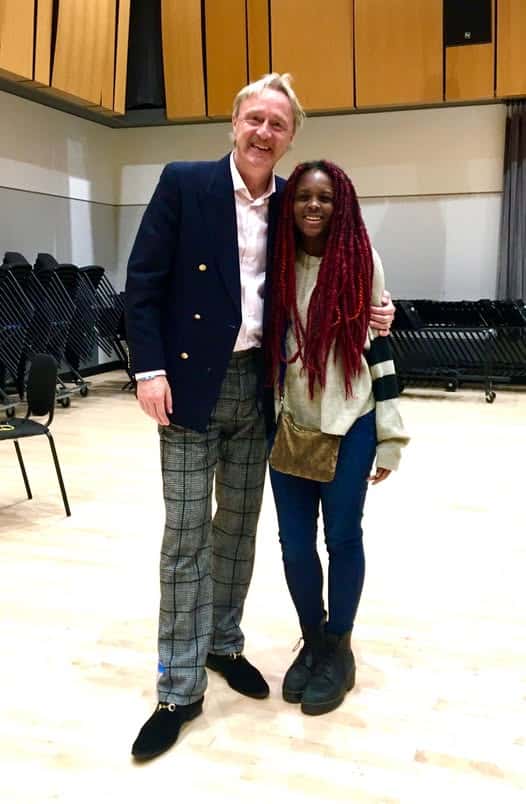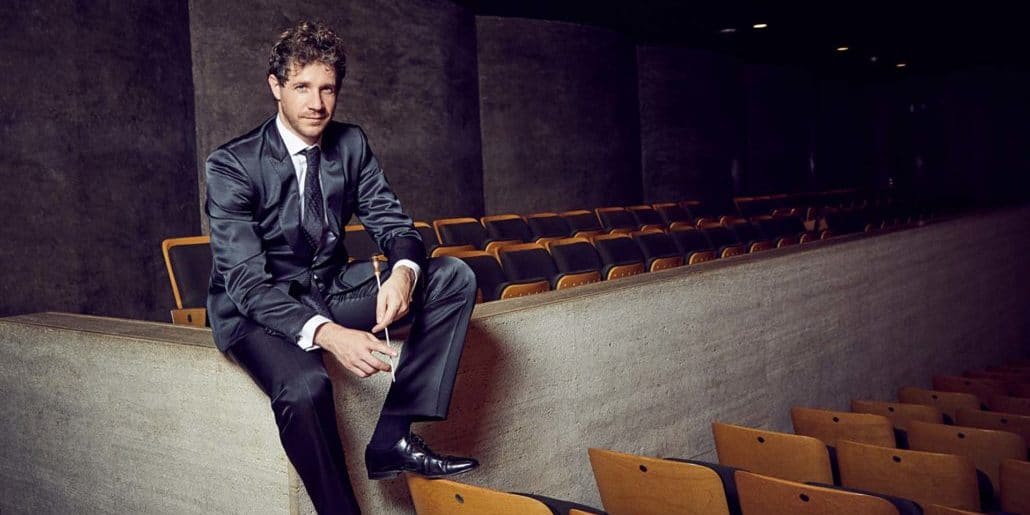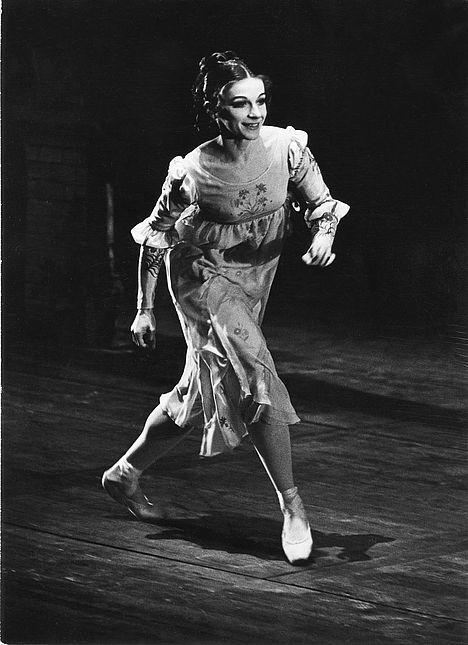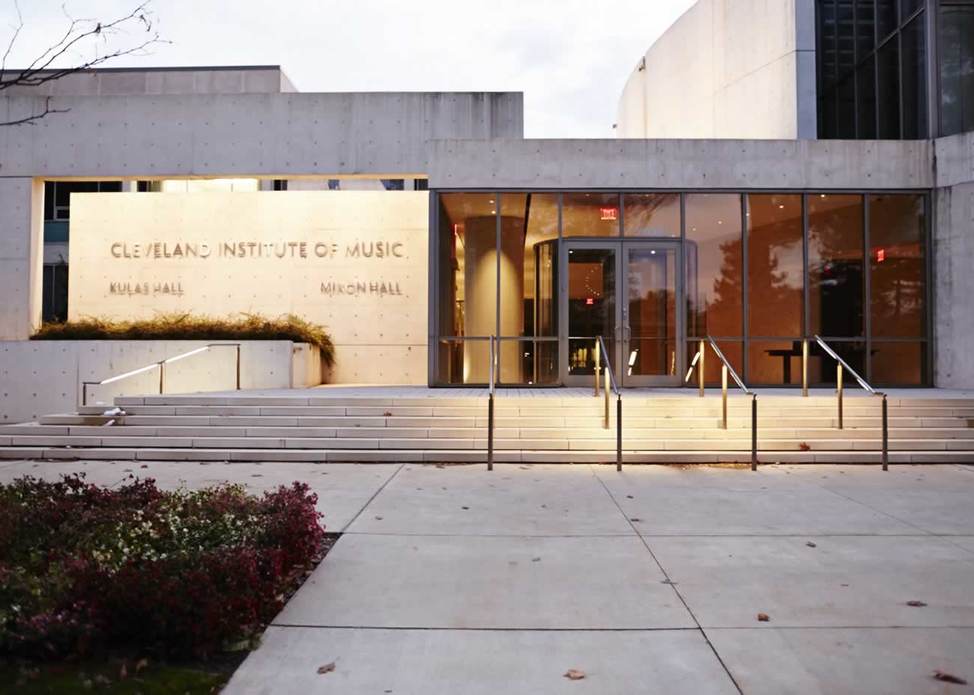Slipped Disc editorial: Why don’t they stand up for the strings?
mainEd Smith, former head of the City of Birmingham, Toronto and Gothenburg Orchestras, has a bone to pick with conductors. They are very quick to milk applause for every part of the orchestra, he says, except the main body of strings. A rethink is needed, says Ed.
Maestros, read carefully and respond.

When I was Orchestra Manager of the Liverpool Philharmonic in the 1970’s, second or third rate conductors, desperately anxious for a re-invitation, would single out sections or individual players for special acknowledgement at the end of a performance. They no doubt thought that wind and brass players were more “important” and had greater influence on the conductor engaging process than the strings. We all recognised this ingratiating tactic and treated it with the amusement and disdain it deserved. And they were usually never seen again!
But now, they nearly all do it!
Most conductors – including many of the great ones – go through the silly ritual of bringing individual players and sections to their feet for special attention – sometimes even at the end of a single piece. And the string players are, of course, always the last to be acknowledged.
It’s a really quite surprising display of insensitivity and I can’t understand why it’s become so widespread. Of course conductors should get the cellist up after a Brahms Second Piano Concerto or the cor anglais after a Swan of Tuonela or the trombone after a Shostakovich Fourth Symphony and other players where really significant solos have featured. And an especially well playing wind section in a Mozart Piano Concerto might be worthy of separate acknowledgement. But otherwise the orchestra is an orchestra – a group of up to 100 + musicians who play together as one body. It’s not a collection of individual and separate groups of woodwind, brass, percussion and strings.
I believe it should be acknowledged and applauded collectively and equally as such. How insulting it must be for those 60 odd string players (who, incidentally, will have probably put in significantly more graft in terms of rehearsal time) to have to sit and tap their stands enthusiastically whilst their colleagues are bidden to rise (often reluctantly and with some embarrassment) to receive special adulation. Of course, they themselves are not going to give voice to any frustration. That would be churlish. But I’d be very surprised if beneath the surface, whilst applauding their colleagues, there is not at least a little sense of feeling undervalued. And what can the players and sections singled out do other than stand to accept their special applause as commanded by the conductor as gracefully as they can?
No, the only people who can put a stop to this are the conductors themselves ( or their managers). So those who are reading this, please reflect a little on just how upsetting it may be for all their players to perpetuate this discriminatory practice.
Am I being curmudgeonly? Well, I don’t think so – I’m just articulating what I think needs to be said on behalf of those who are unable to. It’s a bit like the devaluation of the standing ovation which has now become so commonplace to mean nothing………..but that’s a separate gripe!
Edward Smith





Ed Smith is perfectly right. Many conductors certainly milk the applause by acknowledging individual players who, in turn, mouth excessive modesty at the audience (“Who, me? You surely don’t mean little old me, do you?”). And the string sections (first violins, second violins, violas, cellos and double-basses) hardly ever get their individual moments of glory. But then, who said there is any justice in this world of ours?
Spot on. I’m sure I speak for many rank and file fiddle players who do feel slightly miffed when we have played significantly more of each piece than wind or brass, and then have to sit and smile sweetly whilst a (perfectly nice and very skilled, mind you) clarinettist or whoever gets a special mention for playing a few bars… Conductors, take note! PS galling also because we have to turn up at the very start of a rehearsal, only to see the trombone section rock up an hour later when they are required… And they then get the special applause!
Even less so the percussionists who are left to stand with the strings, unacknowledged and uninvited. Sometimes I’ve evens een the percussionists remain seated when the remaining string players are brought to their feet. It has a distinctly ironic – no – ugly feeling about it. Ed, I agree!
Very well said Ed!! This has bugged me for years. The strings 999 times out of a thousand, never get a special acknowledgment and as a result we rarely get applauded by our colleagues in the wind and brass as we are always last…just the herd. There is only one conductor coming into my orchestra that does always acknowledge the strings and that;s Andrew Litton, good on you Andrew! String players work INCREDIBLY hard in virtually all programmes and pay the price with sometimes severe physical problems as the years go on. All we ask for is a little recognition. Actually, that’s not true. We don’t ask for anything and that’s partly the problem. Thank you again Ed!
As far as I know, many of Andrew’s best friends were string players; Nadja, Mats, Ellen, Roger, etc. He is a smart guy. Good on him !
Very well said Laurence, and good to hear from you. I still remember the fun we all had on that Guildhall String Ensemble tour to Taiwan and South Korea many years ago. I’m sure the fact that there was a blissful absence of a conductor on that trip added to the enjoyment.
I too enjoy listening to many of my wind and Brass colleagues then politely tap an imaginary music stand ( so as not to damage my bow ) with a smile almost stapled onto my sweat-covered face as the individuals or small groups are, often reluctantly, brought to their feet by a condescending “”””” maestro “””””
One of the reasons that the string sections rarely get applauded by our colleagues in the wind and Brass is that they do not have a bow to tap/ wave aimlessly, as this has i think just become a ritual.
How about a new ritual with the whole orchestra bowing in unison with genuine applause for individual contributors, then the concertmaster inviting the conductor to join us at the end.
Of course, until the music listening public and many music writers and critics cease the tiresome adulation of conductors, the Status Quo will continue.
The problem as I can see it, is that the principal horn, or flue, oboe, clarinet or trumpet (occasionally the principal bassoon) has played a tricky solo passage, and the conductor is acknowledging that player (rather than the whole section). Unless the leading player of each of the string section has been acting as a concertino group, or has played a solo, strings play en-mass.
The great thing about the strings is that body of sound they produce, whilst the woodwind and brass all play individual parts.
It isn’t some kind of lack of acknowledgement of the corp of the orchestra, it is more that the strings form the backbone of orchestral sound with the woodwind and brass adding solo passages and harmonic support.
As someone who when I do play in an orchestra, enjoy playing second oboe (so unless I have a Cor Anglais solo, rarely take a separate bow) Unless I’ve done something special, I don’t really feel the need; an orchestra is a team.
The only part of this I agree with is about the increasingly routine standing ovation. It is true that the strings have more to do than wind players, but they also have anonymity if they want it; they can even–horrors–make a mistake without being put to public shame. If a horn flubs an entrance that is not only noticed but is sometimes mentioned in newspaper reviews. A wind or brass player with a solo is exposed in a way that has to be stressful. The bassoonist who starts out the Rite of Spring needs not only to be first rate but to have strong nerves. There was an essay here recently by a player who simply could not play if she knew people were looking at her. As a regular symphony audience member I know who the principal players are and who is playing. At the symphony I attend, every one of them is capable of playing the solo part in concertos–and they are sometimes given an opportunity to do so. They deserve any individual recognition they can get and, again as an audience member, I am glad to give it to them.
For me the problem is when applause (be it polite or standing ovation) becomes part of a ritual. Totally spontaneous applause, however, is exciting and a part of the concert experience…if an individual player has contributed something magical then why not acknowledge that? As a string player I love hearing a beautifully played solo passage on whatever instrument and allowing the audience to show their particular appreciation doesn’t seem inappropriate to me. We, after all, can express our appreciation to our colleagues directly.
Milking the applause, however it is done, is boring and annoying. Giving a principal player, or section, an individual bow simply for doing their job is patronising – to everyone – and should be discouraged!
Perhaps the orchestra’s leader (hello Laurence!) should have a word…after all, an ingratiating conductor would be only too keen to accept the culture of the orchestra!
@Will Schofield – Concerning milking the applause, our orchestra management does this all the time. Concerto soloists are press-ganged into giving encores even when the applause has been ebbing for a good few minutes. It’s become so systematic that it’s actually quite offensive. Barely has the soloist reached the exit than the stage manager immediately sends them out again, quite a long walk in that particular hall and lights will not be raised until we’ve heard an unscheduled Schubert Impromptu or the like.
At least our hall hasn’t succombed to the obligatory, spontaneous standing ovation for anything other than a complete train wreck. There is still hope.
Utter nonsense; cry-baby stuff. It’s simple logistics; you work from the BACK of the orchestra, (Where a lot of the wind players, percussion, etc. all sit, you see?) and end up with the strings in the front. Duh. The string players are seen continuously throughout the performance as well; and as soon as they stand up, they’re BLOCKING the musicians behind them. Seriously, write about something important. This is total nonsense. nothing to see here. Move along…..
Well put, Joe. I agree 100%
My thoughts exactly! And I played for years as a professional cellist in orchestras of all kinds. It’s just logistics. I never gave it a second thought. who cares?
That is not true in many cases. Most big orchestras do not sit on flat stages these days – they use risers for all non-strings. Therefore even while standing, strings would not be blocking the audience’s view of wind players and percussionists.
This is fascinating, as I’ve always thought it was the least I could do to have the solo winds, brass, and percussion stand for special applause. These musicians are stuck in the back of the orchestra, usually unseen by the audience. It never occurred to me that the strings would feel slighted by this practice, as they are at the forefront of the orchestra, and you can’t possibly miss them. In many halls, you would be hard-pressed to see ONE wind or brass player behind the mass of strings.
This has certainly given me pause though, and at my next concert, I’ll try having the solo winds, brass, and percussion along with each section of the strings stand. My fear with this is that it takes a very very long time and from an audience point of view it can be a little bit ridiculous, but hopefully it will be worth it.
I’m a youngish conductor, so I’ve grown up with this practice being traditional and omnipresent. I had no idea that it is a relatively new thing!
‘An orchestra is a team’ (comment from JB above) – spot on!
But there is another related issue: as a concert-goer of over 50 years, I am delighted that the strings now invariably turn to face the audience to receive the applause; on DVDs one can see the etiquette that was deemed acceptable back before the turn of the century – strings standing resolutely facing the conductor and not making eye contact with the ‘paying public’ – and which would be quite unacceptable now. But I would like to see things taken a little further. Those of us who choose to sit in the Choir seats, whether for financial reasons or because we feel more a part of the whole experience there than in the stalls, are never acknowledged by the orchestra. The only person who does this is Gustavo Dudamel – and it went down very well following the Philharmonia’s tremendous performance of Mahler 7 in Symphony Hall, Birmingham, a month or two back; the orchestra offered us the broadest smiles – perhaps recognising in us real music-lovers, whose mobile phones never go off and who manage to sit through an entire work without feeling the need to dislodge phlegm loudly at every quiet moment…..
The Dude did exactly the same in the Royal Festival Hall performance, one night before the Symphony Hall outing, and it was plain to see that both the Philharmonia players and also the audience who had been sitting in the choir seats were delighted by this gesture.
haha…This is comical. He actually believes the audience is directing the sound their hands slapping together is making towards individual people and sections.
Luckily, concertmasters have that thick ego to comfort them when THEIR applause is so minimal.
Did you ever see that footage of old Stravinsky at Royal Festival Hall in mid 60s where he conducted the Firebird. He beckons to various soloists (the horn who has a big part) and when walking off the podium, Stravinsky shakes the hand of the guy right at the very back of the 2nd violins 😉
The fiddler was the last person S. passed on his way out and it’s funny to see
Here in Dallas Jaap Van Zweden will usually acknowledge the strings, sometimes even doing each section separately, after a substantial piece. I do recall Litton doing that quite often also when he was conductor here.
It takes a long time to step through the orchestra like that. I often wonder if the audience applause will hold out long enough.
I think this is really silly. I am both a string player and a conductor and I never felt under-appreciated when I saw my wind player colleagues get a solo bow. And when I conduct I always want to acknowledge players who had an exposed solo, as well as sections, depending on the works played. To me it is simply good manners and part of orchestra culture. In many countries it would be outrageous not to acknowledge solo winds and sections. The concert is a celebration of both the skills of the individuals and the concerted (!) effort of the whole orchestra. Why water it down to be “PC”?!? And let me tell you it has absolutely nothing to do with someone being hungry for a re-invitation. Celebrating with the players who did a good job has nothing to do with empty flattery some conductors give to players during the rehearsal.
Isn’t the conductor generally (a) acknowledging solo work the leading players from each instrument group may have done, and (b) thanking the leaders of each section, then generally asking the whole section to rise (e.g. principal flute, oboe, clarinet, bassoon, then all winds), which is exactly what they tend to do with the strings (leader, plus all strings, or leader plus leader violin 2, viola, cello where there has been solo work – less frequent than for wind and brass you will admit, then all strings). I don’t see any major disparity.
In any case, Ed Smith and others are just as guilty – they go around paying these players more than the strings by and large, thereby demonstrating that his directorship and general management exhibit exactly the same prejudices he is accusing conductors of!
I really think this is a storm in a teacup: the proverb “last but not least” springs to mind. In any case, the applause tends to swell when the strings are finally brought to their feet. In opera and theatre, it is usually the case that the prima donna/primo uomo is the last to take a bow during the curtain call (this is not to say that all operatic customs were infallible: the practice of having the women exit the stage before the men strikes me as archaic).
Ballet, too.
Ed is spot on. As usual.
Bravo! Good point!
Yes, you are being curmudgeonly- and and also self-contradictory, since you accept that there is “of course” a place for solo bows for the repertoire *you* deem appropriate.
Bullseye!
I’ve noticed that at a lot of the concerts I’ve been to, conductors have increasingly been making a point of shaking the hands of all the front desk string players. Given that they can’t acknowledge all 60 string players individually, that seems like a nice gesture in the right direction.
Oh, and happy Christmas Ed – the best boss I’ve ever worked for in the orchestra business!
Well said Laurence! Ed always did know the value of ALL the players.
We,your audience,have thought this for a very long time.
It’s good to hear the orchestra speak.
We’ll be watching.
And yet Ed, who you say knows the value of all the players so well, awards higher salaries and job perks to principal wind and brass positions, while leaving most of the strings to their rank-and-file packages. Precisely the sort of valuing X more than Y which he disparages conductors for.
What a bizarre comment! Can you name any profession in which higher levels of responsibility are not recognised with higher salaries?
Halldor – well exactly. So you’re saying some people bear greater responsibility than others and deserve to be rewarded for that over and oboe the others. In what way is that radically different from giving those who have performed particularly as individuals acknowledgement over those who haven’t?
That is just funny. In all the years I played in violin sections or sat concertmaster, I never felt left out at all. There are many important things in the orchestra biz to become exercised about; this is not one of them.
Same here. I think this is a non-issue.
I’m with Sasha and several others here when I say that this whole gripe is comically absurd. Why are we even talking about this? I’m a conductor (and worked with some of the fine orchestral musicians mentioned about halfway up this thread) and have always done the bows in score order. It’s often a tough call about who should get a bow. But all this second guessing??
It’s moments like this when I’m happy to be the music director of an excellent student orchestra that doesn’t eat itself with bile and venom whenever a conductor opens his mouth or makes a decision, like “professionals” do.
The first time I saw individual players or sections singled out for special applause was by Celibidache with the LSO in London in the 1970’s. I was sitting in the front row and it struck me as strange that he insisted on making the winds stand up (there was Prélude à l’après-midi and Rhapsodie Espagnole) when it was really the strings who were the most incredible group that evening. I was a member of the LSO Club in those days and often went to their RFH concerts. The winds and brass had always been decent, but never had the strings sounded so amazing as they did that night under that other genius of the Carpathian mountains.
I find singling out members of a group effort in bad taste. Recently, our theatre produced a little-performed work by a known composer which featured a solo horn. He had to play an ‘F’, middle of his range, solo, on three occasions. This was deemed such a prodigious accomplishment that he was actually invited up on stage to take a bow alongside the soloists, stage director and conductor, his pristeen instrument gleaming in the spotlights. Just the other week, I witnessed Ivan Fischer and his Budapest Festival Orchestra in a performance of Mahler’s Ninth Symphony tell us for eighty-five uninterrupted minutes of aesthetic bliss why we need to continue believing in and fighting for our cultural heritage. No one player was singled out at the end, no exposed oboe trill considered more important than a tellingly muscular bassoon entry, no trombone’s muted complaint rated higher than a ‘cello’s noble supplication. Everyone was in it together and the audience rose as one to acknowledge their gift to us. There’s a current subculture which decrees that everyone should be a winner, everyone deserves to be Number One, completely undermining what we should contribute together as equal participants in a joint effort. Let’s not divide to conquer; let’s remember why we love this art form and its virtue of unity.
Interesting comments. I think the socio-psychological explanation of this annoying phenomena is multi-faceted. Two main factors:
-power grabbing by the conductor. By publicly appointing accolade to single individuals, he demonstrates his role of the leader of the group. The moment of applause is the moment the audience takes over and is “in charge”. Egomaniacs among the conductors (read almost all of them) can’t let go of their power, they must even in that moment wrestle it back to show who is the master and who appoints what the audience is giving their appreciation for.
-lengthening applaus. second rate conductors of boring performances can lengthen applause that otherwise might die out too soon for their egos, by doing this individual stand up game which by itself can take a good two minutes.
It would be up to the orchestras to deny these silly narcissism games, which shouldn’t be tolerated by them.
Why not break with the whole feudalistic tradition in the applause ceremony? No extra bows for anyone. Conductor, soloists, solo players in the orchestra all stand together in the end and take the applause. Nobody leaves stage and comes back, effectively rendering the “rest” on stage as “extras” and himself as superior. It’s a mutual effort, the music is in the center, and the individual interpreters are just that, interpreters. Everybody is important in the whole.
Maybe flags with the portraits of the composers or scores of the pieces played should be raised, and those made the center of adulation after a concert.
Try being a harpist! We never get a bow when we have a solo.
I was in the pit for ABT last summer doing “Corsair”, and the harpist did get recognized, to thunderous applause from audience and colleagues both.
Strange you would say that: I have seen harpists being given individual recognition countless times, in my orchestra and in others too.